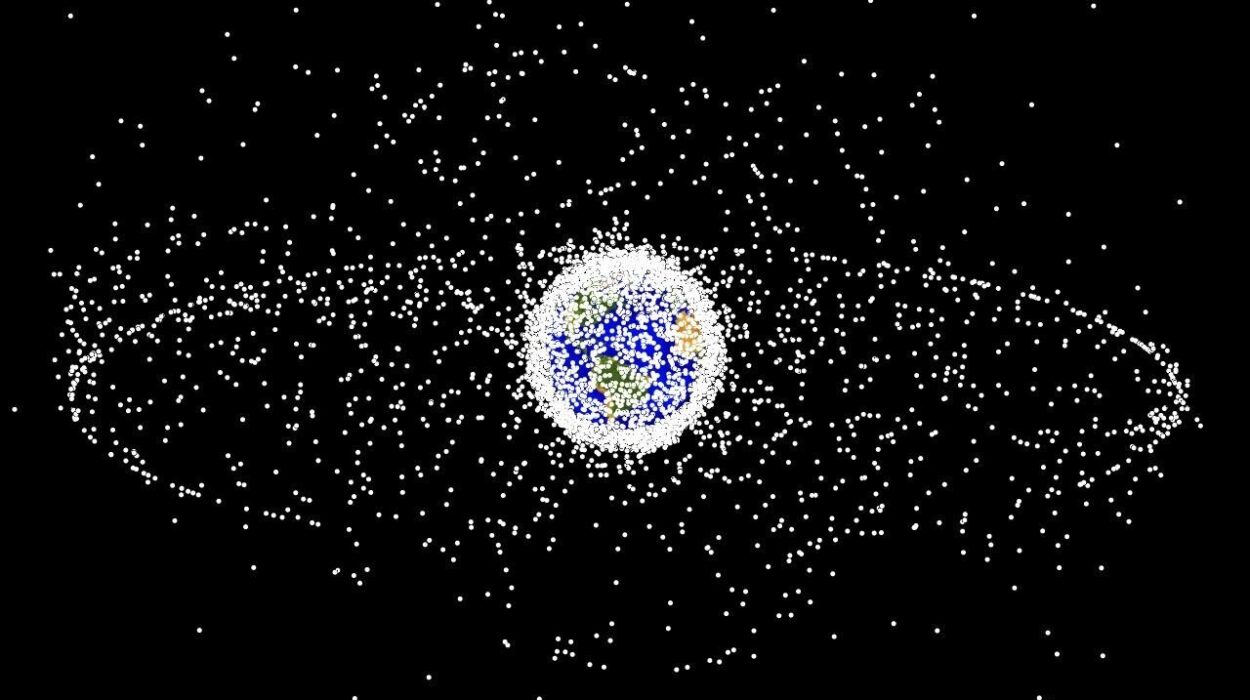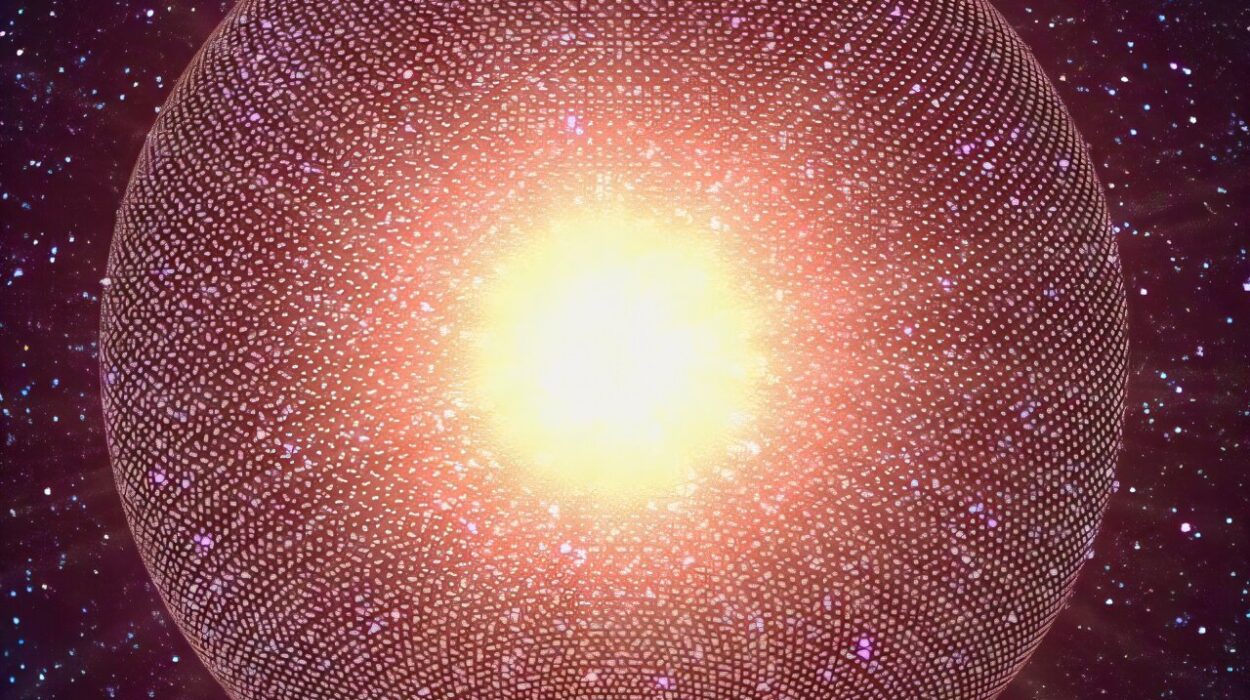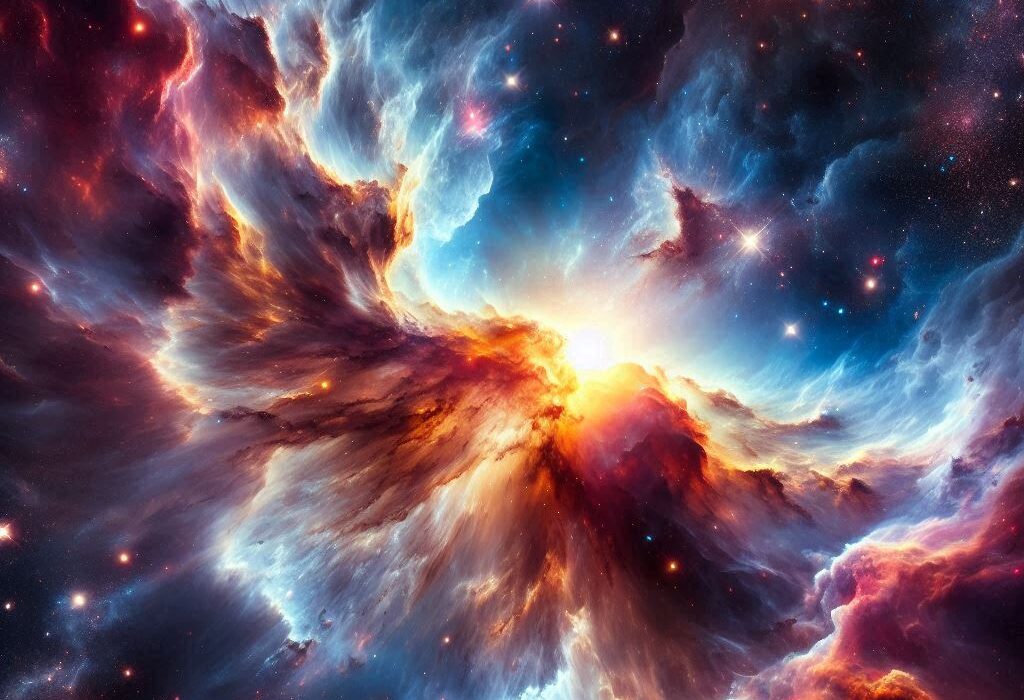Galaxy clusters stand as the titans of the universe—immense structures containing hundreds to thousands of galaxies, all bound together by gravity. These are not quiet, peaceful gatherings. They move, evolve, and sometimes collide with cataclysmic force. When two galaxy clusters crash, the energy they release rivals the scale of the Big Bang itself, unleashing shock waves that ripple through the cosmos.
These shock waves sweep across tenuous clouds of gas and particles scattered between galaxies. As the waves slam into free-floating electrons, they spin and spiral around magnetic fields, releasing radio waves into the void. What emerges from this cosmic turbulence is something astonishing: radio relics—vast arcs of radio emission stretching across millions of light-years. Some can span more than 6 million light-years, as long as 60 or 70 Milky Way galaxies arranged edge to edge. These relics hang like glowing scars on the landscape of the universe, reminders of a collision so powerful that space itself seems to resonate.
And yet, for all their grandeur, radio relics have long posed a series of stubborn mysteries—puzzles that challenged astronomers and threatened to undermine our understanding of cosmic shock waves. But now, new research from scientists at the Leibniz Institute for Astrophysics Potsdam (AIP) offers a breakthrough, revealing the hidden physical processes that sculpt these structures and resolving longstanding contradictions in the data.
The Mysteries Hidden in Cosmic Arcs
Radio relics should not, in theory, be as bright or expansive as they are. Their existence suggests a complex interplay between electrons, shock waves, and magnetic fields—an interplay that had not been fitting together cleanly.
The first puzzle emerged when observers measured the magnetic fields inside radio relics. The results were startling: the magnetic fields were extraordinarily strong, far stronger than standard models predicted. Something seemed to be amplifying them, but scientists did not know what.
The second mystery arose from comparing data across different wavelengths. When astronomers observed these cosmic shock waves in radio light, they detected evidence of strong, powerful shocks—exactly what would be needed to energize electrons. But when they looked at the same region using X-rays, the shock strength appeared significantly weaker. How could the same event appear so different?
The final gap in understanding was the most troubling. X-ray data implied that many of these shock waves were simply too weak to accelerate electrons efficiently at all. And yet, radio relics shine brightly, which means electrons are being energized. This contradiction left physicists with a profound question: if the shocks are too weak, how are relics forming?
A Multi-Scale Breakthrough
To find answers, researchers at AIP took on one of the most difficult challenges in astrophysics: connecting physical processes that occur across an almost unimaginable range of scales.
The work led by Dr. Joseph Whittingham embraced a multi-step, multi-scale strategy. First, the team traced the birth of shock waves through large-scale cosmological simulations—virtual universes that reveal how clusters form and evolve over billions of years. Then, they recreated these shock events in controlled, high-resolution simulations, where every detail could be explored with precision.
Finally, they followed the journey of individual electrons and modeled the radio waves produced as those electrons spiraled around magnetic fields. This allowed them to bridge vast scales, from the size of clusters spanning millions of light-years to the motion of electrons smaller than a dust grain by trillions of times.
By stitching these scales together, the researchers created something rare: a complete, self-consistent picture of how radio relics form, evolve, and shine.
The Birth of Magnetic Strength
One of the team’s most important discoveries involved what happens when shock waves reach the edges of a galaxy cluster. There, they collide with shock waves created by cold gas falling into the cluster from cosmic filaments. The collision compresses and reshapes the surrounding plasma, forming a dense sheet of gas that moves outward, plowing into additional clumps of material.
This repeated crashing of shocks into gas clumps generates turbulence—swirling, chaotic flows that twist and amplify magnetic fields. What results is a magnetic landscape strong enough to match what observers measure. This solves the first mystery of radio relics: magnetic fields are not inherently powerful but are strengthened through cosmic turbulence during cluster collisions.
Prof. Christoph Pfrommer, a co-author of the study, explains that this natural amplification process boosts magnetic fields to precisely the levels previously thought unexplainable. What once appeared to be an anomaly now fits neatly within the physical story unfolding at the cluster’s edge.
Divergent Signals: Why Radio and X-rays Disagree
The researchers also uncovered the reason radio and X-ray observations have long told different stories about the same shock waves. When a shock wave plows through clumpy gas, only certain segments of the shock-front become significantly stronger. These powerful segments generate much brighter radio emission, making the shock look strong when viewed at radio wavelengths.
X-rays, however, respond to the average conditions across the entire shock-front, including weaker regions. As a result, X-ray observations portray a softer, less intense shock.
These findings reveal that radio and X-ray signals are not contradictory—they are simply highlighting different parts of the same cosmic structure. The two forms of radiation are not inconsistent after all; they are complementary lenses, each revealing a different facet of the shock’s personality.
The Final Puzzle Falls Into Place
The last mystery involved the apparent contradiction between weak shock waves and the highly energized electrons needed to produce a radio relic. According to the new findings, only a small portion of the shock-front—the strongest, most turbulent part—contributes the majority of the radio signal. These regions are powerful enough to energize electrons efficiently.
Even though the overall average shock strength appears low in X-ray observations, the parts that actually matter for generating radio waves are strong. Thus, the contradiction dissolves: weak average shocks can coexist with bright, energetic radio relics.
Dr. Whittingham notes that this insight opens the door to even more research, providing a foundation for unraveling the remaining mysteries of cluster collisions and cosmic shock waves.
A New Understanding of Cosmic Collisions
This research marks a turning point in how scientists interpret radio relics. What once seemed impossible now fits into a coherent, physically grounded narrative. Galaxy cluster collisions are not simple, uniform crashes—they are chaotic, turbulent, and richly textured events. Their shock waves ripple through intricate landscapes of gas and magnetic fields, producing phenomena that only appear paradoxical until viewed through the right lens.
The breakthrough also highlights something profound about the nature of the universe: even its largest structures are shaped by delicate interactions on astonishingly tiny scales. A collision between clusters millions of light-years wide can depend on the motion of individual electrons. Turbulence on cosmic scales can sculpt magnetic fields, resolving puzzles that have lingered for years.
This is one of the greatest powers of astrophysics—the ability to link the infinite with the infinitesimal, revealing the universe as a connected, evolving whole.
The Continuing Story of Radio Relics
Though many of the big puzzles have been solved, radio relics still hold secrets. Scientists are eager to understand how these structures evolve over time and how they might differ in various cosmic environments. New telescopes, especially low-frequency radio observatories, are poised to unveil even more relics, each one a record of ancient cosmic collisions.
For now, thanks to innovative modeling and deep scientific curiosity, the story of radio relics is clearer than ever. What once looked like a contradiction now emerges as a testament to the complexity and beauty of the universe—a universe in which shock waves can stretch across millions of light-years, electrons can spiral in magnetic storms, and the cosmic past leaves glowing arcs that whisper tales of violence, transformation, and cosmic rebirth.
The universe is vast, turbulent, and endlessly surprising. And radio relics are among its most powerful reminders that even in the emptiness between galaxies, the cosmos is alive with motion, energy, and unexpected brilliance.
More information: Joseph Whittingham et al, Zooming-in on cluster radio relics—I. How density fluctuations explain the Mach number discrepancy, microgauss magnetic fields, and spectral index variations, arXiv (2024). DOI: 10.48550/arxiv.2411.11947






